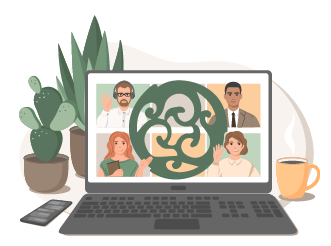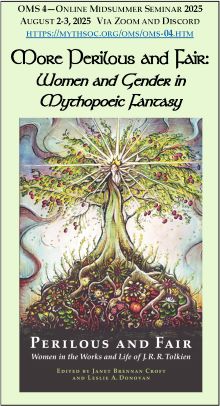Loading...
Document Type
Paper
Event Website
http://www.mythsoc.org/mythcon/mythcon-51.htm
Start Date
1-8-2021 2:00 PM
End Date
1-8-2021 2:45 PM
Description
Garcia y Robertson's The Spiral Dance begins as a historical novel set in the time of the rebellion led by the Earl of Northumberland and the Earl of Westmoreland against Elizabeth I in 1569, told from the point of view of Anne, Countess of Northumberland. It is also an epic or heroic fantasy; besides Lady Anne, two of its main characters are a werewolf named Jock and the Blessed Virgin Mary. Their adventures carry them not only to the highlands of Scotland but to the realm of Faerie. The author's theme is that one must lose all one has before one can be truly transformed—or, to put it another way, before one can discover one's true self. It may be read as an extended meditation on the nature of reality and illusion, and the discovery of true identity. Thus it is a classic Quest tale. Like Bilbo Baggins, Anne goes “there and back again,” and returns changed. So have heroes from Gilgamesh to Odysseus to Sir Gawain to Luke Skywalker. But the author's original contribution to this genre is his conception of Faerie. We are accustomed to think of the ordinary world as real, and of Faerie as the land of illusion. But in Garcia y Robertson's fictional universe, the ordinary world is a place of illusion, where things are seldom what they seem, and Faerie is the realm of reality, where illusion is impossible, and all things are seen for what they really are. In this paper I shall explore how the author uses this conceit to pursue his theme, with references to J. R. R. Tolkien and Sir Thomas of Ercildoun. I hope to show how this master storyteller gives his readers a rollicking tale of warfare and witchcraft, which is also an extended spiritual meditation on identity, illusion, and reality.
Tech Mod: Holly Felmlee.
Creative Commons License

This work is licensed under a Creative Commons Attribution-NonCommercial-No Derivative Works 4.0 International License.
Included in
Faerie Reality in The Spiral Dance by Rodrigo Garcia y Robertson
Garcia y Robertson's The Spiral Dance begins as a historical novel set in the time of the rebellion led by the Earl of Northumberland and the Earl of Westmoreland against Elizabeth I in 1569, told from the point of view of Anne, Countess of Northumberland. It is also an epic or heroic fantasy; besides Lady Anne, two of its main characters are a werewolf named Jock and the Blessed Virgin Mary. Their adventures carry them not only to the highlands of Scotland but to the realm of Faerie. The author's theme is that one must lose all one has before one can be truly transformed—or, to put it another way, before one can discover one's true self. It may be read as an extended meditation on the nature of reality and illusion, and the discovery of true identity. Thus it is a classic Quest tale. Like Bilbo Baggins, Anne goes “there and back again,” and returns changed. So have heroes from Gilgamesh to Odysseus to Sir Gawain to Luke Skywalker. But the author's original contribution to this genre is his conception of Faerie. We are accustomed to think of the ordinary world as real, and of Faerie as the land of illusion. But in Garcia y Robertson's fictional universe, the ordinary world is a place of illusion, where things are seldom what they seem, and Faerie is the realm of reality, where illusion is impossible, and all things are seen for what they really are. In this paper I shall explore how the author uses this conceit to pursue his theme, with references to J. R. R. Tolkien and Sir Thomas of Ercildoun. I hope to show how this master storyteller gives his readers a rollicking tale of warfare and witchcraft, which is also an extended spiritual meditation on identity, illusion, and reality.
Tech Mod: Holly Felmlee.
https://dc.swosu.edu/mythcon/mc51/schedule/34



Comments
Recorded Session